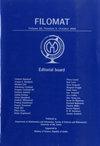临近到期股票贷款的渐近分析
IF 0.9
4区 数学
Q2 MATHEMATICS
引用次数: 0
摘要
本文导出了近到期派息股票贷款的尺度价值函数的渐近表达式和最优赎回边界。利用值函数在练习边界处的导数所满足的方程,建立了边界的渐近表达式。当无风险利率r小于贷款利率r时,即r < ?,边界趋于Ke?T0是抛物线对数形式,这种情况是主要结果。对于情况r ??时,相应的问题又回到了无利率r ?的美式看涨期权。? 现有的研究结果可以用来对股票贷款进行适当的调整。值函数的匹配展开是用一个小参数执行的。数值算例验证了该方法的有效性。本文章由计算机程序翻译,如有差异,请以英文原文为准。
Asymptotic analysis for stock loans near maturity
In this paper, we derive the asymptotic expressions of the scaled value function and the optimal redemption boundary of stock loan with dividend-paying near maturity. Using the equation satisfied by the derivative of the value function at the exercise boundary, we set up the asymptotic expression for the boundary. When the risk-free rate r is smaller than the loan rate ?, i.e., r < ?, the boundary tends to Ke?T0 in parabolic-logarithm form, this case is the main result. For the case r ? ?, the corresponding problem returns back to a usual American call option with interest-free rate r ? ? and the existing results can be utilized to make proper adjustments for the stock loan. The matched expansion for the value function is performed with a small parameter. Numerical examples are provided to demonstrate the effectiveness of the proposed method.
求助全文
通过发布文献求助,成功后即可免费获取论文全文。
去求助
来源期刊

Filomat
MATHEMATICS, APPLIED-MATHEMATICS
CiteScore
1.20
自引率
0.00%
发文量
132
审稿时长
9 months
期刊介绍:
The journal publishes original papers in all areas of pure and applied mathematics.
 求助内容:
求助内容: 应助结果提醒方式:
应助结果提醒方式:


